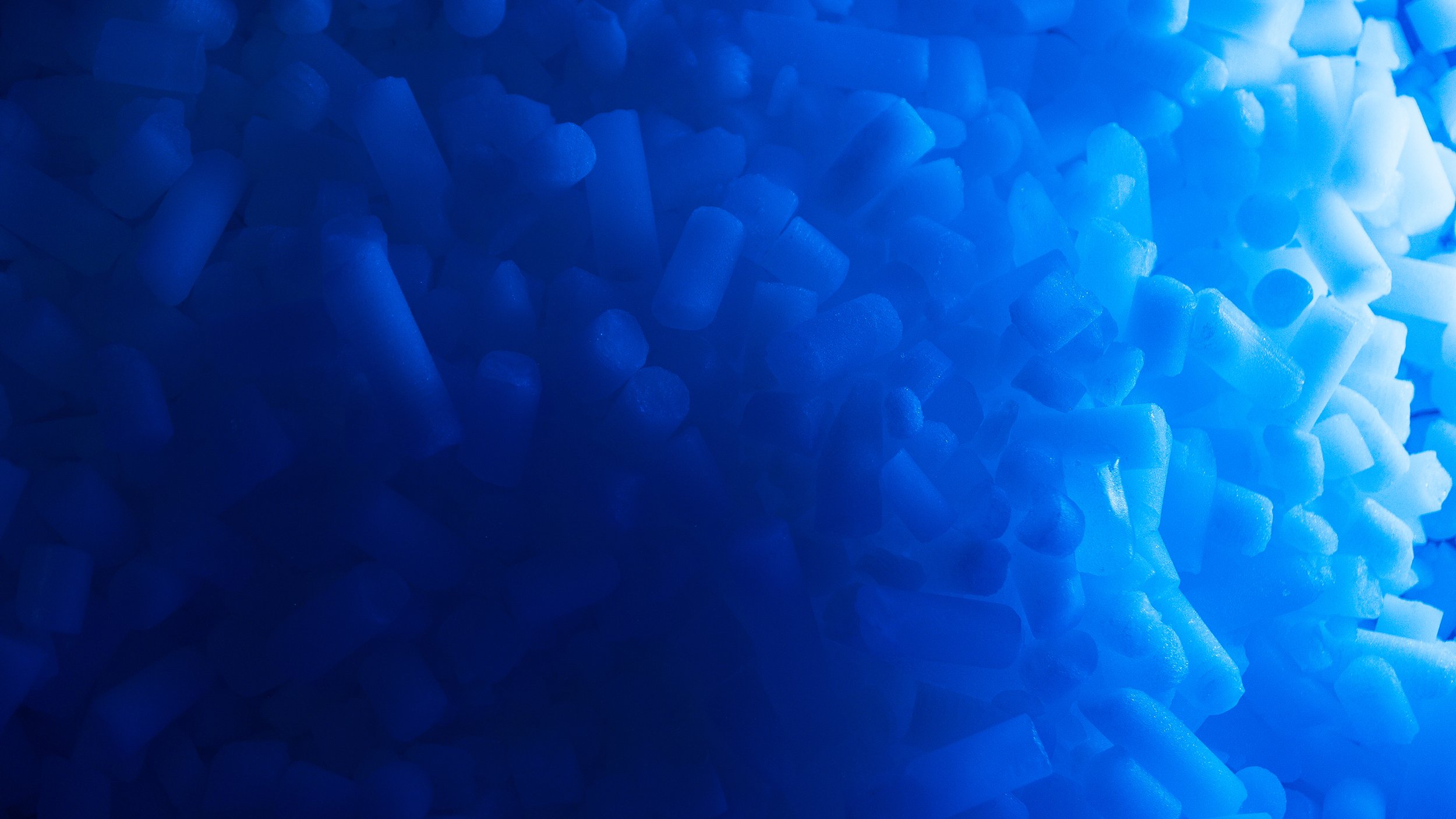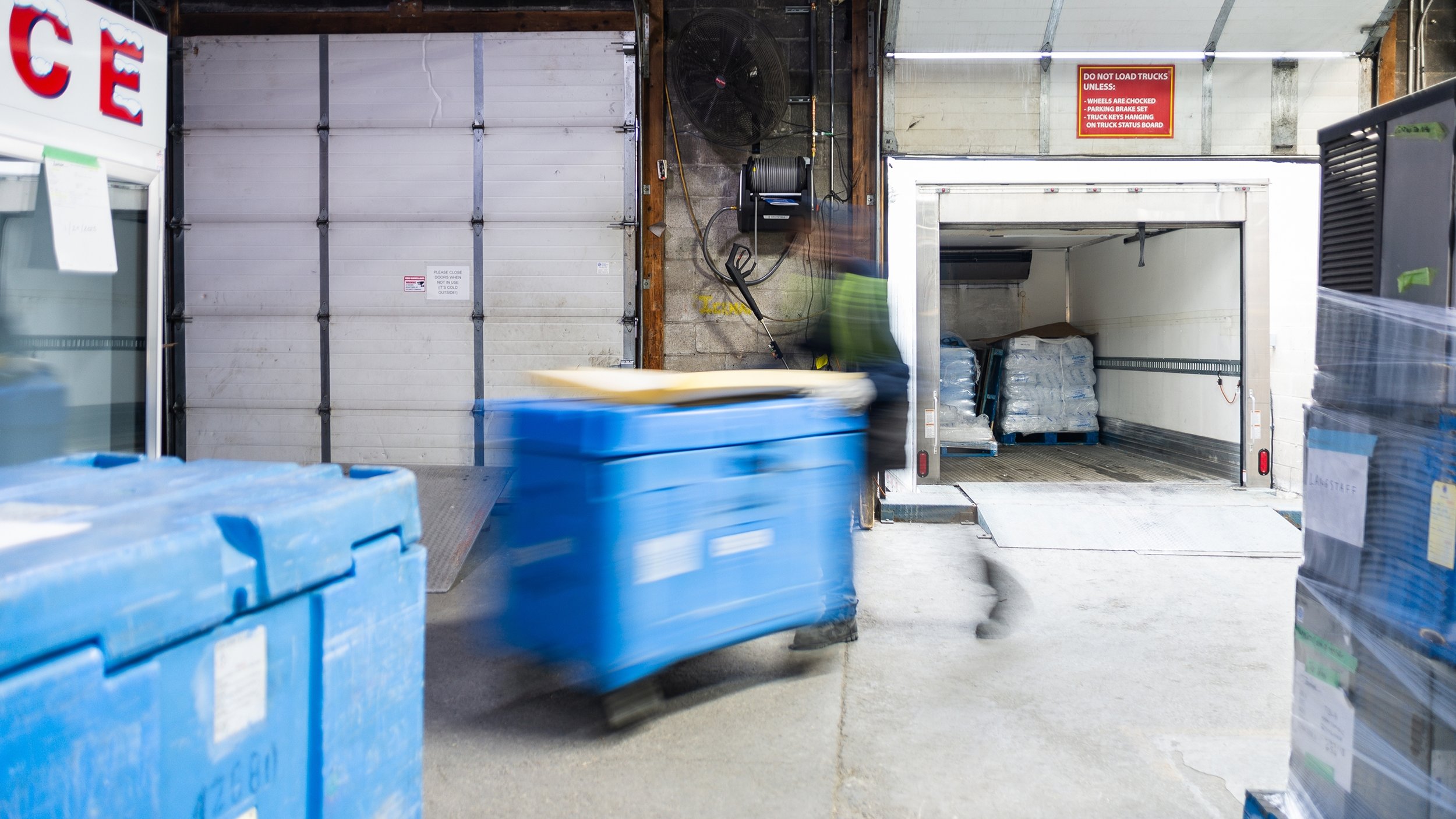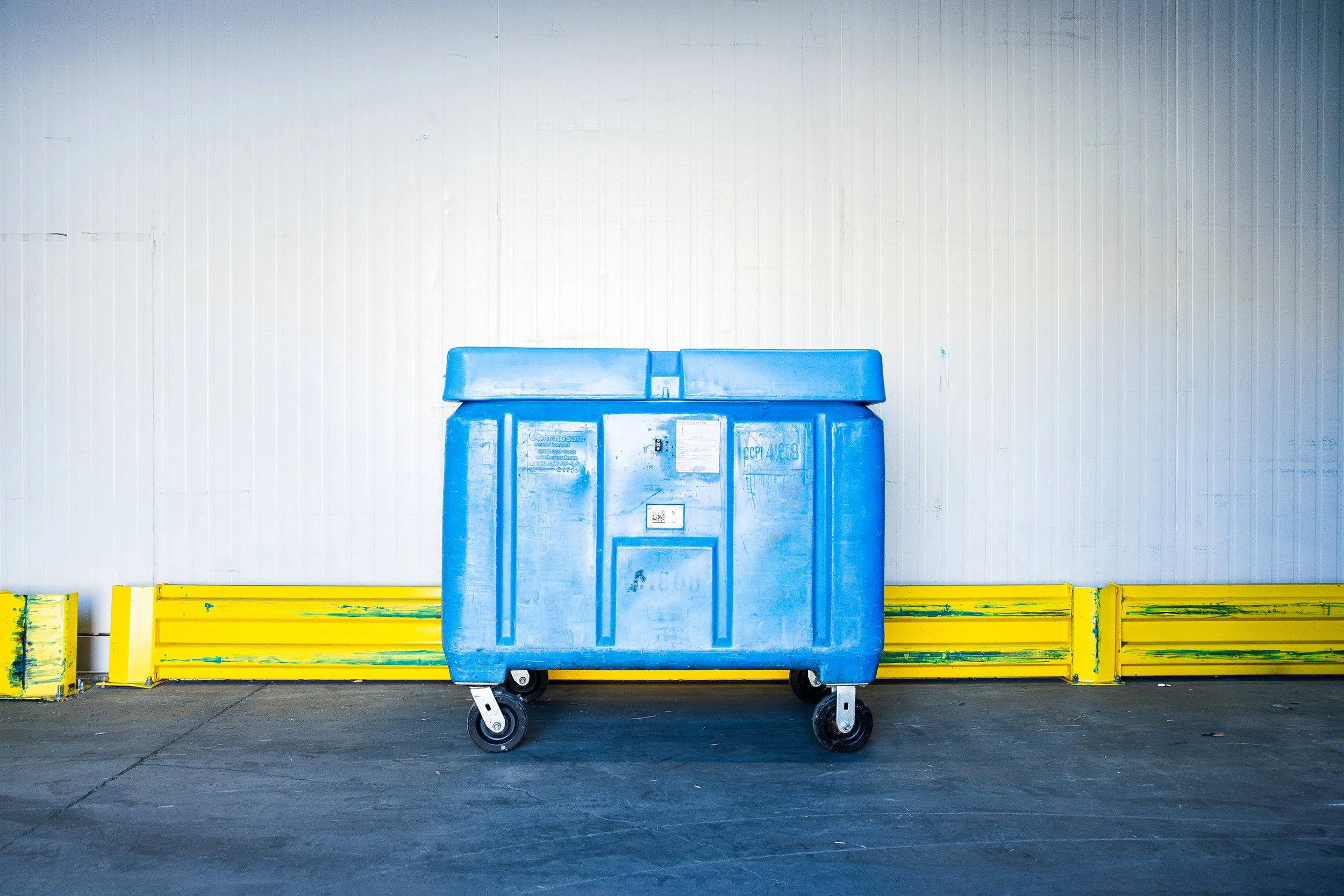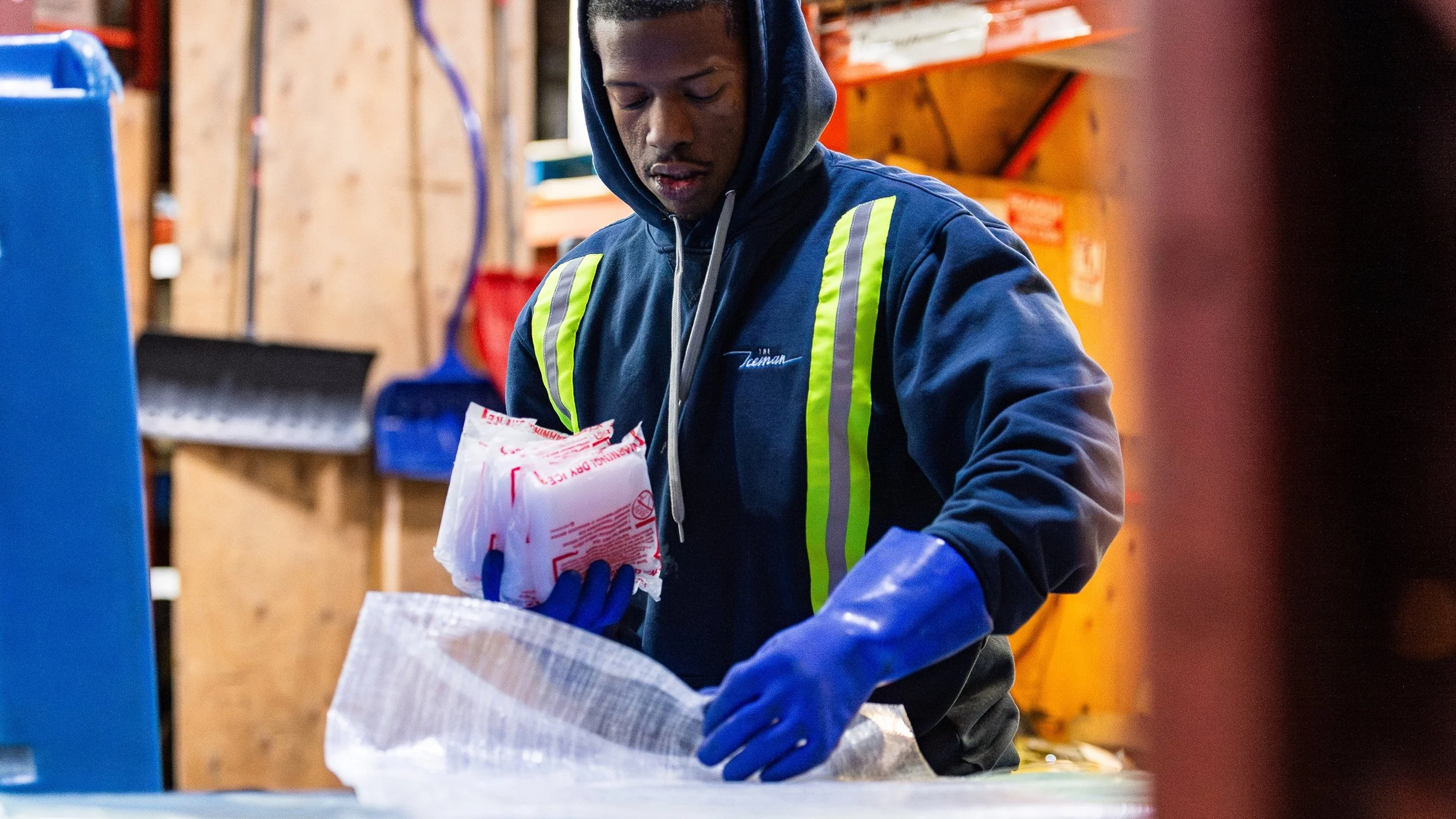
CANADA’S DRY ICE EXPERTS – RELIABLE SUPPLY FOR SHIPPING, STORAGE, AND SPECIAL EFFECTS.
DRY ICE
Dry ice is the go-to solution for temperature-sensitive shipping, and at The Iceman, we have it in all forms—nuggets, slabs, rice, and blocks! Our dry ice is trusted by special effects companies, labs, photographers, catering teams, freight companies, campers, and fishermen alike. Plus, we offer in-house dry ice shipping across Canada, the US, and beyond, along with rental options for safe storage. Whether you’re preserving, transporting, or creating an unforgettable effect, we’ve got your dry ice needs covered!
DRY ICE NUGGETS
Packaged in a durable thermal bag to ensure freshness, our dry ice nuggets (also known as pellets) are ideal for labs, pharmaceutical and biotech companies, educational institutions, caterers, and photographers.
Choose your quantity by weight.
6KG
12KG
250KG Bin
SIZE
1/2” Diameter
DRY ICE SLABS
Our dry ice slabs are securely wrapped in kraft paper for safe handling and lasting performance. Perfect for catering events, special effects, shipping perishables, or keeping things cool on camping and fishing trips.
Choose your quantity by weight.
6KG
12KG
250KG Bin
SIZE
5” x 5” x 1”
10” x 10” x 1”
10” x 10” x 2”
DRY ICE BLOCKS
Wrapped in Kraft paper for easy handling, our dry ice blocks are ideal for camping, fishing trips, or emergency situations like power outages. Use them to keep food frozen in walk-in or chest freezers when the power’s out—or anytime you need long-lasting cooling.
Choose your quantity by weight.
6KG
12KG
250KG Bin
SIZE
10” x 10” x 10”
DRY ICE RICE
Designed for dry ice blasting, this fine, fast-sublimating form of dry ice is ideal for cleaning and decontaminating food processing equipment and industrial surfaces.
Choose your quantity by weight.
6KG
12KG
250KG Bin
Dry ice rice sublimates quickly—best used immediately after purchase.
SIZE
1/8” Diameter
RENTALS
Need dry ice for a short-term job or event? We offer rentals of our heavy-duty insulated storage container—perfect for safely transporting and storing dry ice pellets or blocks with minimal loss.
Reliable, efficient, and ready when you need it.
DRY ICE STORAGE CONTAINERS
Keep your dry ice colder, longer. This high-performance container is ideal for safely storing and transporting dry ice pellets or blocks. Made with specially compounded resins for superior cold-impact durability, it features advanced insulation that reduces sublimation by up to 10% compared to standard poly containers.
Durable, efficient, and built for the cold.
Various sizes available.
PACKAGING MATERIALS
Keep your shipments cold and secure with our essential packaging solutions. Choose from durable Styrofoam shippers for insulation and long-distance transport, or freezer packs for added cooling support.
Simple, effective, and ready to go.
SMALL STYROFOAM SHIPPER (1915)
Keep your dry ice cold and secure during delivery with the 1915 styrofoam container—designed for reliable insulation and safe shipment.
CAPACITY
19L
INTERNAL
12.25” x 10.75” x 9”
EXTERNAL
15.25” x 13.75” x 12”
MEDIUM STYROFOAM SHIPPER (4212)
Keep your dry ice cold and secure during delivery with the 1915 styrofoam container—designed for reliable insulation and safe shipment.
CAPACITY
42L
INTERNAL
25.25” x 11.5” x 9.25”
EXTERNAL
27.75” x 13.75” x 11.75”
LARGE STYROFOAM SHIPPER (81)
Keep your dry ice cold and secure during delivery with the 1915 styrofoam container—designed for reliable insulation and safe shipment.
CAPACITY
69L
INTERNAL
23.5” x 17.5” x 10.5”
EXTERNAL
28.5” x 20.5” x 14”
FREEZER PACKS
Cryopak gel packs stay frozen longer than ice, making them the perfect companion to dry ice. Use them together to safely extend the freezing time of your shipments with reliable, consistent cooling.
Freezer packs are available by the case with 24 packs per case.
SIZE
10” x 5.75”
WEIGHT
24 oz
Dry Ice Pick-Up & Delivery
Choose convenient delivery or pick-up for your dry ice needs. For more information or to place an order, call us at 416-504-6615.
HOW TO PURCHASE DRY ICE
In-Store: Visit our downtown Toronto location, open 7 days a week, to purchase dry ice and packaging supplies.
By Phone: Call us at 416-504-6615 to place your order for delivery.
DELIVERY SERVICES
Same-Day Delivery (GTA Only)
Minimum Order: 12 kg of dry ice
Delivery Time: Delivered within 60 minutes of order (Time Sensitive Delivery)
Hours: Available 7 days a week, 7am to midnight (restrictions may apply)
Payment Methods: Visa, MasterCard, Amex, Debit, Cash
Next-Day Delivery
GTA: Delivered within a 5-hour scheduled window (Scheduled Delivery)
Outside GTA: Shipped by FedEx (restrictions may apply)
Hours: Available 7 days a week, 7am to midnight (restrictions may apply)
Payment Methods: Visa, MasterCard, Amex, Debit, Cash
ONSITE PICK-UP
Minimum Order: 5 kg of dry ice
Hours: Open daily, 7am to 7pm (restrictions may apply)
Payment Methods: Visa, MasterCard, Amex, Debit, Cash
RESOURCES
Dry ice needs to be handled with care. Protect yourself with these safety guidelines.
-
We take great care in the packaging of your dry ice shipments. Our insulated Styrofoam Shippers are designed to maintain temperature during shipment in cold environments. We surround your items with the proper amount of dry ice required based on size, weight, temperature, and length of travel. Dry ice is ideally suited for the shipment of pharmaceutical, biotech, life sciences and meat and bakery food products.
We also package shipments with our re-usable gel packs that last longer than regular ice – the refrigerant gel is designed to protect your product from freezing or over-heating.
Dry Ice Packaging Materials -
DO NOT HANDLE dry ice with your bare skin. The usage of protective gloves, towels, or tongs is strongly suggested.
Handle dry ice in a ventilated location.
Children should be supervised by adults when using dry ice
Dry ice has a surface temperature of between -78 and -110 degrees Celsius.
Not wearing gloves when handling the product will result in extreme frostbite.
Always keep dry ice away from children.
Do not swallow, or put dry ice in your mouth.
Do not put dry ice in anyone’s clothing for fun. Potentially severe frostbite may occur as a result of prolonged contact with the skin.
Do not place dry ice inside an air tight container. Sublimed vapors will increase the interior pressure and will rupture the container.
Place a thick layer of cardboard, Styrofoam or similar separator between food and liquid products which need to be chilled. Food and liquid products in containers will freeze when their container is placed in contact with dry ice over a short period of time.
Dry ice does not “melt” into a liquid. A process called “sublimation” occurs. Sublimation is when a solid substance skips the liquid state, and goes directly into a gas from its original solid state.
Dry ice is solid carbon dioxide that expands to a gas. You can lose consciousness by directly breathing in the dry ice vapors for an extended period of time. You will sense carbon dioxide by a “tingling” sensation in the mouth.
-
We provide dry ice packaging and shipping services across Canada, the US, and the world.
The Iceman has been shipping temperature sensitive products across Canada, within the USA, and world-wide (depending on legislation in place in the destination country) for over 25 years. We are open for business 24 hours a day, 7 days a week via our fleet of refrigerated trucks or via FedEx.
We offer the following services:
Pickup Service (we’ll pick up your shipment from your location and return it back to our facility)
Documentation Preparation (to guarantee compliance with the numerous protocols required to ensure a trouble free shipping experience)
fedEX shipping form (PDF)
waiver of liability (PDF) – for perishable goods
letter of intent (PDF) – for meat & poultry
Packaging Material –if you want to handle your own frozen shipment you can purchase packaging material from us
-
Everything You Need to Know About Dry Ice
From ordering to handling, here's the quick guide.Where can I get dry ice?
Order online for pickup or same-day delivery (minimum 6kg for pickup, 12kg for delivery).How much does it cost?
Prices vary by type and quantity, call us to obtain a more accurate quote.Not sure how much you need?
Use our [Dry Ice Calculator].What are your hours?
Check our [Contact Page]—hours change seasonally.What is dry ice?
It’s frozen carbon dioxide, extremely cold at -78.5°C, used to keep things frozen without leaving a mess.Does it melt?
Nope—it sublimates, turning directly from solid to gas.How is it made?
CO₂ gas is compressed, cooled, and sprayed to form snow, which is then pressed into blocks or pellets.How should I store it?
Wrap it in kraft paper and place it in an insulated container—never airtight.How fast does it evaporate?
About 1% per hour in a typical ice chest—buy it close to when you’ll use it.Do you sell containers for shipping?
Yes—we offer insulated Styrofoam containers (9.5L–8L). [View Packaging Options]Who uses dry ice?
Labs, caterers, photographers, freight companies, campers, and more.Why use dry ice?
It’s efficient, eco-friendly, electricity-free, and leaves no residue. -
Home & Outdoor
Broken Fridge or Freezer? Keep your food cold during power outages or breakdowns.
Camping Trips – Chill or freeze perishables without electricity.
Fishing & Hunting – Preserve your catch or game during transport.
Flash Freezing Fish – Freeze sushi-grade fish instantly—longer freshness, FDA-approved.
Freezing Fruits – Freeze fruits quickly for later storage.
Gardening & Pests
Faster Plant Growth – Let dry ice sublimate near plants daily to boost growth.
Mosquito Trap – Place dry ice away from people to attract mosquitos elsewhere.
Bed Bug & Moth Control – Use dry ice in sealed bags to kill bugs and larvae.
Science, Education & Medicine
School Experiments – Great for volcanoes, comets, fog effects, and learning about sublimation.
Wart & Skin Treatments – Used by doctors to freeze and remove imperfections (don’t try this at home).
Cold Caps for Chemotherapy – Helps reduce hair loss during treatment.
Shipping Medical Samples – Keeps temperature-sensitive items cool.
DIY & Repairs
Car Dent Removal – Pop out small dents with a blast of cold (no creases or bends).
Pipe Freezing for Plumbing – Freeze water in pipes if you can’t shut it off.
Shrink Metal Parts – Use dry ice to shrink metal for a perfect fit.
Industrial & Construction
Asphalt Cooling – Control temperatures for paving and speed up coring.
Dry Ice Blasting – Clean surfaces like sandblasting, but without the mess.
Molded Plastics & Rubber – Shrink materials to remove flash.
Tank Repair & Welding – Displace oxygen in flammable tanks before repair work.
Specialty Uses
Green Burials – A natural alternative to embalming for preserving the body.
Seed & Grain Storage – Protect from pests and bacteria post-harvest.
Carbonate Drinks – Add fizz to water or juice naturally with dry ice.
Visual Effects
Fog Effects for Events & Theatre – Add to hot water for a dramatic fog.
Special FX Shows – Pair with fog machines or fans for extra atmosphere.

Downtown Toronto's Go-To ice shop
The Iceman’s downtown Toronto location is your ultimate one-stop shop for all your ice needs—perfect for BBQs, parties, and last-minute events. With a full range of ice products ready for quick pickup or fast delivery, getting stocked up is easy and convenient. Swing by to grab everything you need to keep your gatherings cool and well-supplied!
782 Adelaide Street West
Monday – Sunday, 7am – 6pm
416-504-6615













